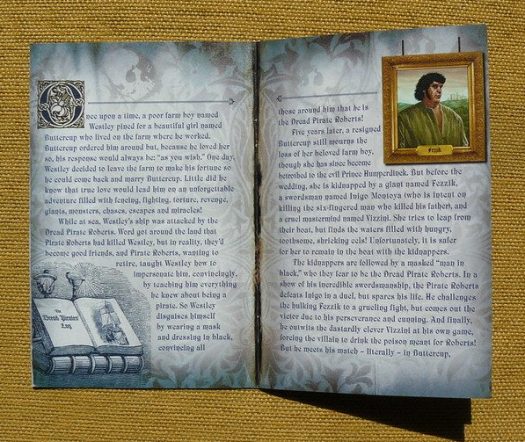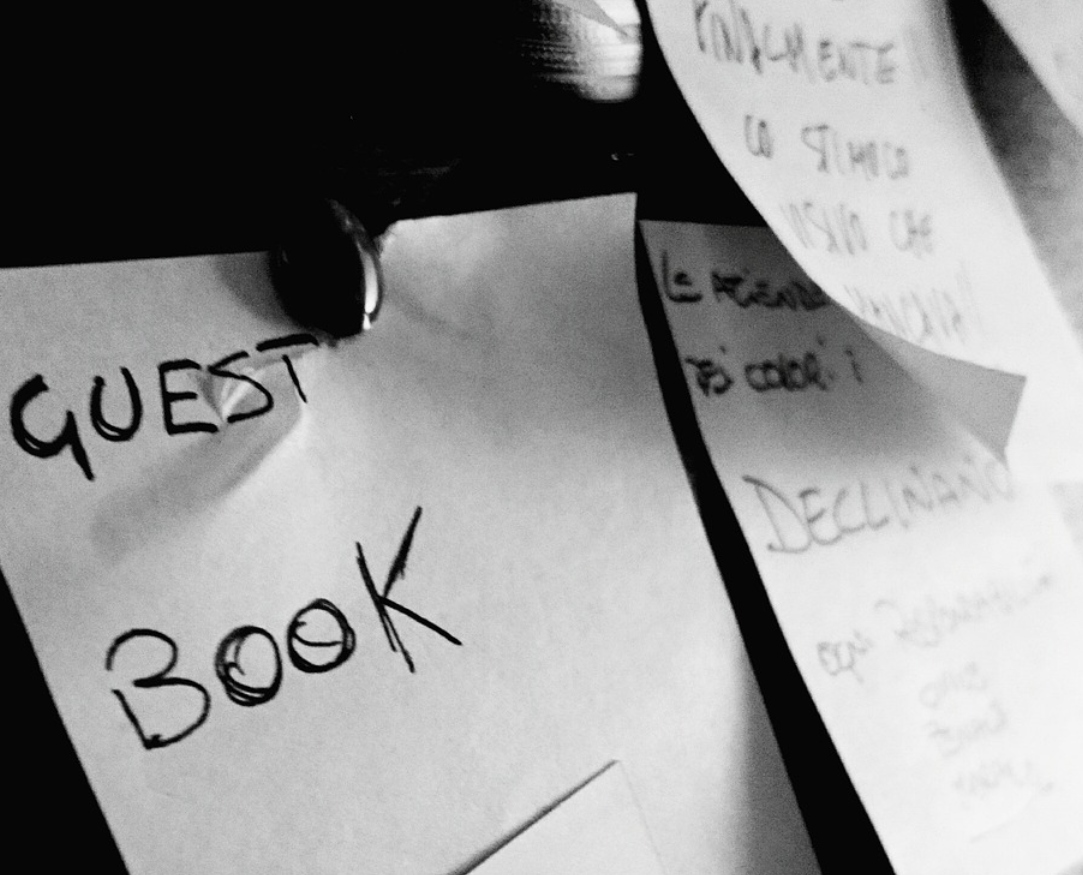Invisible Structure: What The Princess Bride Teaches Us about the UnConference
By Guest | December 14, 2019 |
 Please welcome back WU community member and author Carol Newman Cronin to Writer Unboxed today! When Carol asked if she might contribute a post on both the WU UnConference, which she attended this past November, and The Princess Bride, we couldn’t resist — two of our favorite things, after all!
Please welcome back WU community member and author Carol Newman Cronin to Writer Unboxed today! When Carol asked if she might contribute a post on both the WU UnConference, which she attended this past November, and The Princess Bride, we couldn’t resist — two of our favorite things, after all!
Carol, an award-winning author, editor, and Olympian, will publish her fourth novel, Ferry to Cooperation Island, in the spring of 2020. She publishes a weekly blog called Where Books Meet Boats.
Learn more on her website, and by following her on Facebook, BookBub, and Goodreads.
Invisible Structure: What The Princess Bride Teaches Us about the UnConference
I’ve seen The Princess Bride so many times that I’ve memorized several of its best lines. Like many of you, I have my own personal favorite (which, unlike many of you, has nothing to do with killing fathers, or preparing to die). For those who haven’t yet had the pleasure, here’s the basic story line: a boy is sick in bed, so his grandfather comes over and offers to read to him. Despite initial doubts that a book could possibly be as interesting as a video game, the boy quickly becomes lost in the grandfather’s favorite fairy tale: following the quest of Wesley to win back (the way too passive) Princess Buttercup.
No matter how often I watch that movie, I always get lost in the fairy tale right along with the young boy. It isn’t until the action is so rudely interrupted—to discuss kissing, ick—that I remember the “real” story taking place within a nondescript kid’s bedroom.
What I’d never once considered (until Keith Cronin’s session on The Jenga of Story, at the 2019 UnConference) was how this extra “frame” of grandfather-bonding-with-grandson deepens the movie’s impact. In fact, I’d never thought about the damn structure at all, because I was always too busy getting lost in the story itself. Now, it’s so obvious: without that exterior layer, all we’d be left with is a sappy love story interrupted by sword fights. Hardly something I’d be inspired to watch, over and over and over again.
What does a fairy tale have to do with the UnCon?
Like The Princess Bride, the 2019 UnCon’s invisible structure was a huge part of what made it so memorable. First let’s discuss the structure itself, which was meticulously plotted out in advance by UnCon’s “author,” Therese Walsh. We were greeted with a well-organized welcome packet that spelled out the schedule and introduced our fellow writers—as well as name tags that spared us inevitable embarrassment (and also provided clues to each writer’s genre). Over four days, 120 of us were given a choice between simultaneous sessions, each one offering a deep dive into different aspects of craft. The conference timeline minimized potential conflicts, while leaving plenty of time afterward for lingering discussions. Most sessions started and ended on time, no matter how often presenters had their pre-planned thoughts derailed by audience enthusiasm. Lost in the conference “story,” we never had to think about what would happen next, or when.
Now, here’s the “invisible” part:
That same welcome packet began with encouragement to “break free from the schedule.” There was no judgment if we decided to skip a session to write, or visit a museum, or just take a walk or a nap to recover from the brain-filling brain-dump of ideas. Freed to wander within an unseen framework, we were able to embrace inspiration wherever we each found it, no matter how unlikely. (Really? My favorite movie provides an example of story structure?).
It wasn’t until I was driving home that I stopped to consider how many hours of planning must’ve gone into creating those four days of joyous happenstance. I was too busy revelling in the luxury of trusting that invisible structure—without ever feeling like I had to march in lockstep with everyone else. Just as you undoubtedly have a different favorite line from The Princess Bride, each of us took away a different experience from the UnCon. The best stories reach each of us where we are—and so do the best conferences.
Story structure does its job best when it remains out of sight, because it allows us to lose ourselves in the tale itself. I learned that at UnCon—while simultaneously losing myself in the “now” of that week’s invisible structure. Which brings me, at last, back to your burning question: what is my favorite line from The Princess Bride? Even though it has absolutely no relevance whatsoever to this post, I’ll share it: “Are they using the same wind we are?” (What can I say, I’m a sailor!)
Feel free to share your favorite line from The Princess Bride in the comments below. I’d also like to hear about other examples of invisible structure that deepen rather than distract, or your own struggles with writing invisible structure. Or do you just plain disagree with this post? Join the conversation!










Miracle Max: “You rush a miracle man, you get rotten miracles.”
Could it possibly be (just possibly) that this maxim by Max also applies to our writing?
Love that thought! Thanks Anna.
I’ll follow in Anna’s footsteps and suggest that maybe that, too, can be applied to writing. Hm…
Thanks for a fun post, Carol! I’m so glad that you enjoyed the UnConference–and that you gave us some of our funniest moments, too (Cronin v. Cronin, ha!). Write on!
Damn, I got the spelling wrong… and “Westley” is so much more interesting than “Wesley”. Thanks for another lesson from the movie that keeps on giving!
Miracle Max- “Have Fun Storming The Castle ”
Who will be writing the Princess Bride’s Tips for Writer’s?
I volunteer, with everyone’s assistance of course!
And let’s not forget: “You keep using that word. I do not think it means what you think it means.”
Thanks for such a fun post, Carol!
Ooh, I’d forgotten that one… I guess I watch TPB with my sailor’s brain more than my writer’s brain. Another potential “writer’s lesson from TPB”!
This is mine as well, or maybe the one leading up to it. Or maybe this;
“They were both poisoned. I’ve spent the last few years of my life building up an immunity to iocane powder.”
Too many to have just one favorite methinks.
‘Now where was I?’
‘Australia’
Carol, this post is so good it’s INCONCEIVABLE!
LOL James, thank you!
Okay, now I have to watch it again. I can’t pull a quote out of my head, but the swordplay was beyond awesome. As was this post. Thank you, Carol.
Thanks Susan. The next time I watch it (maybe tonight!), I’ll try to pay more attention to structure… and probably fail once again.
“Mawage. Mawage is what bwings us togethah – today.”
Oh, to pick one line. Great post, Carol! The amount of unseen work to bring us togethah. Thank you, Therese.
“Un-Con is what bwings us togethah, today.” Yes thanks Therese! And Brin for the reminder of this favorite…
Wesley: “I’ll need a sword eventually.”
Inigo: “Why? You can’t even lift one.”
Wesley: “True. But that’s hardly common knowledge, is it?”
Sort of like “fake it till you make it,” but with swords. Right up my alley.
Funny, but I just dreamed about UnCon last night (over a month later!). I can see that you’re right about the invisible structure of UnCon, Carol. It’s so freeing, being there! Which provides such wonderful creative fuel for the writerly fires.
Here’s another truth you mention that I can attest to: A TON of work goes into making it seem so loose, so free, and still so jam-packed with value. I know only because I am in contact with UnCon’s “author” throughout the year-plus of planning and sleeves-rolled-up hard work that T puts into making it so. I say year-plus, because she actually starts working on the next one the minute the prior one ends (always thinking, evaluating, planning, that T. Walsh). She’s a wonder I continue to marvel over. Not to mention a gift to the writerly world.
Thanks for such a fun and thought-provoking post. Perfect way to start the writing weekend. Happy holidays, Carol!
Thanks Vaughn. Another lesson for writing, that fake it till you make it. So glad I wrote this, because it’s inspiring another post!
A previous draft included Therese’s helpers, but I decided you all knew who you were already (even if we don’t) so I didn’t need to bog down the post. A belated thanks to all of you, and merry merry to all!
“You seem a decent fellow, I hate to kill you.”
“You seem a decent fellow, I hate to die.”
Best. Swordfight. Ever.
(And yes, I DO read your posts, even after our dramatic public breakup.) :)
Great point about how powerful an impact structure can have, even when it’s invisible. On that point, you and I are in violent agreement. Looking forward to the next time our paths cross!
Thanks Keith. It was your session that inspired entirely new thoughts on structure, so I’m glad you’re still reading despite our personal issues! :)
“The king’s stinking son fired me, and thank you for bringing up such a painful subject. While you’re at it, why don’t you give me a nice paper cut and pour lemon juice on it?” – Miracle Max
I believe this was an ad-libbed line, not in the original script. A reminder that sometimes we have to depart from our carefully planned structure and follow where our characters lead us, no matter how many paper cuts and how much lemon juice…
Great point, Susan (and Miracle Max!).
My favorite ‘As you wish’ the grandfather says to his grandson at the end when he asks him to come back and read the story again. The words are heartwarming and kinda sexy when Westley says them.
It’s the perfect ending, but I’m always sad that it’s over. Thanks for the reminder!
I love The Princess Bride!
I feel like this quotation pertains to the chances of writing an excellent novel and having it become a word-of-mouth hit.
Buttercup: We’ll never survive.
Westley: Nonsense. You only say that because no one ever has.
Excellent point! I’m going to collect all of these into a post that will be in-con-CEIVABLE!
It did not come without effort.